Auditory system
1/21
There's no tags or description
Looks like no tags are added yet.
Name | Mastery | Learn | Test | Matching | Spaced |
|---|
No study sessions yet.
22 Terms
what is sound?
sound is a pressure wave that is created by a vibrating object, and sets particles in the surrounding medium in a vibrational motion (transporting energy)
how do sound waves turn into vibrations in the ear?
tympanic membrane moves inner ear bones, which move oval window (membrane) and makes physical vibrations in the cochlea
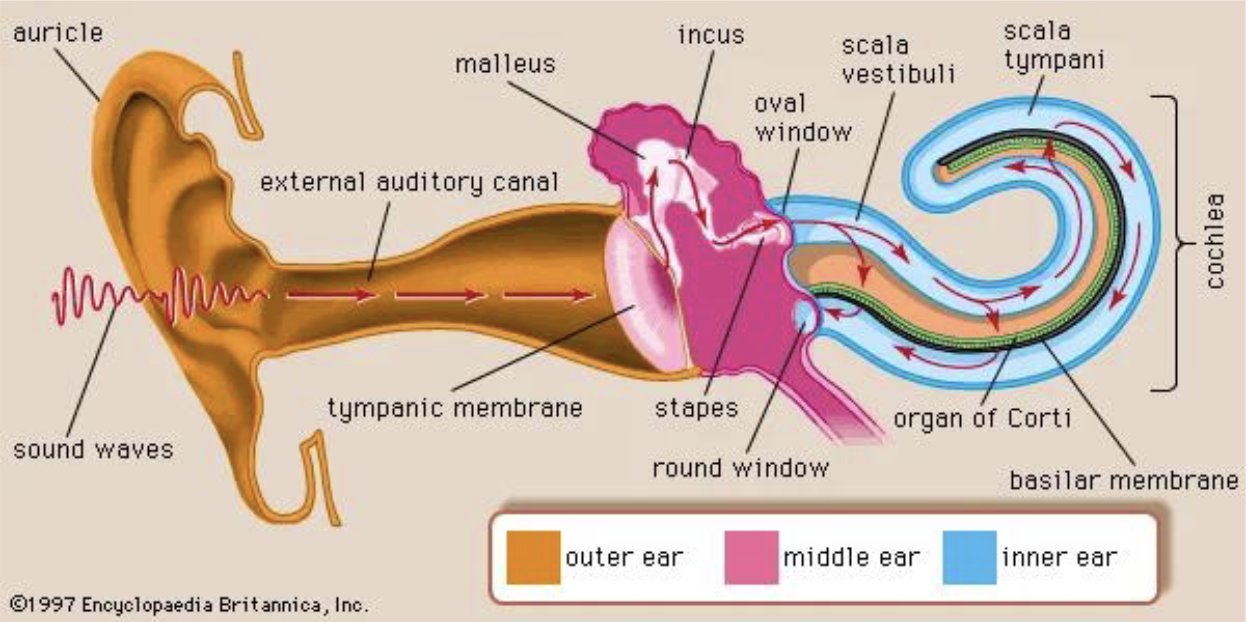
what are hair cells and where can they be found?
they are embedded in the basilar membrane (in the cochlea) and have stereocilia that stick out of the membrane and move with the movement of the basilar membrane (from fluid of cochlea)
what are tip links?
links between stereocilia in hair cells that are physically connected to ion channels
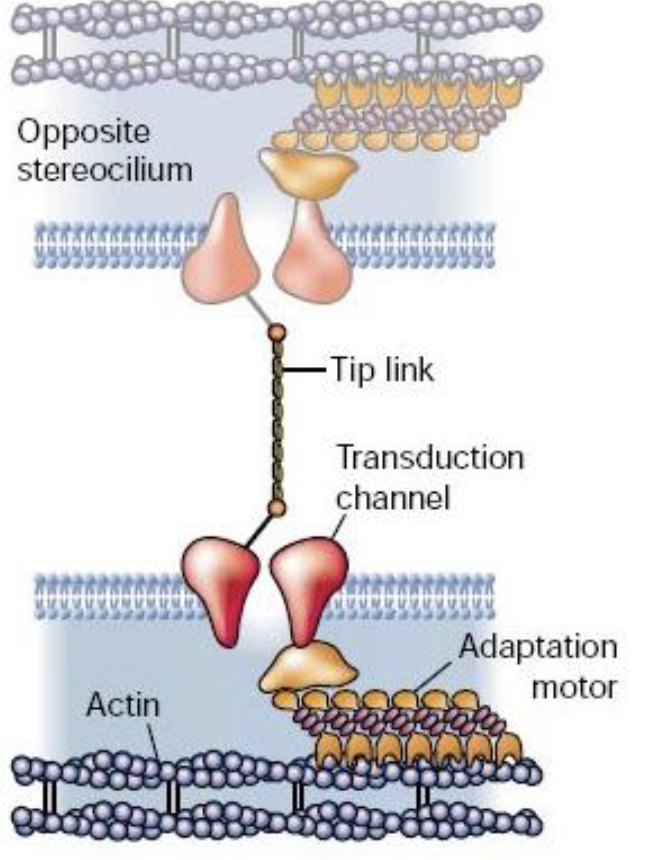
what happens when the stereocilia move?
there is tension on the tip links, leading to the opening of ion channels, which allows for changes in membrane potential and transmitter release
what do hair cells do in terms of signalling?
they transduce vibrational signals (created by sound waves) into electrical signals (via mechanical transduction aka open/closing ion channels)
environment of stereocilia
Stereocilia of hair cells are in a fluid (endolymph)with a high K+ concentration
resting potential of stereocilia
-125 mV
how to depolarize hair cells
mechanical deflection towards the tallest stereocilium opens the K+ channel, causing K+ to flow in and depolarize the cell
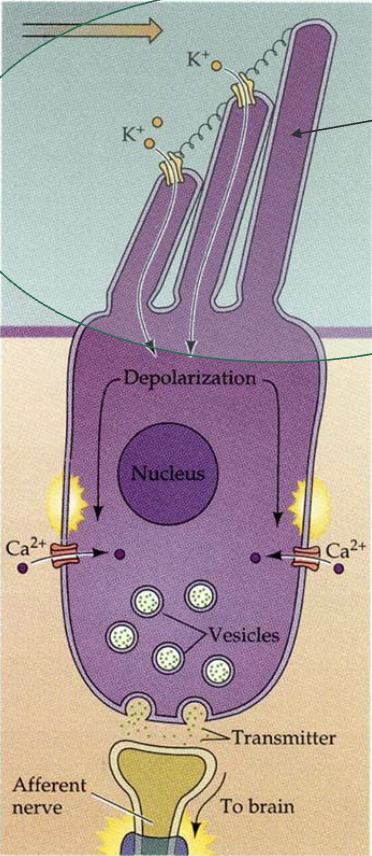
what happens when hair cells are depolarized?
voltage-gated Ca2+ channels open, causing Ca2+ influx, which allows for graded transmitter release
important details of hair cells
they are NOT neurons → they communicate synaptically with neurons
transmitter release varies continuously with hair-cell membrane potential
greater displacement = greater depolarization = more transmitter release
environment of soma of hair cell
low K+ concentration
K+ equilibrium potential in perilymph
more negative than hair cell’s resting potential (-45mV)
repolarization of hair cells
depolarization of the cell allows for the opening of K+ channels in the soma, allowing K+ to exit the cell (down concentration and electrical gradient), repolarizing the cell
direction of deflection of stereocilia
determines changes in membrane potential:
towards largest one → depolarization
towards smallest one → hyperpolarization
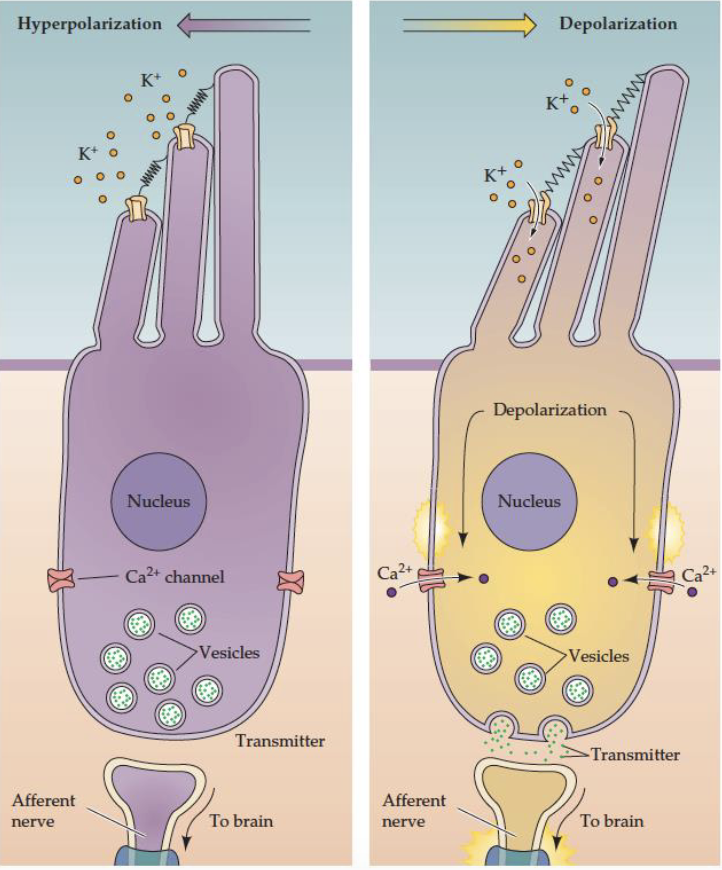
where are hair cells embedded?
tectorial membrane
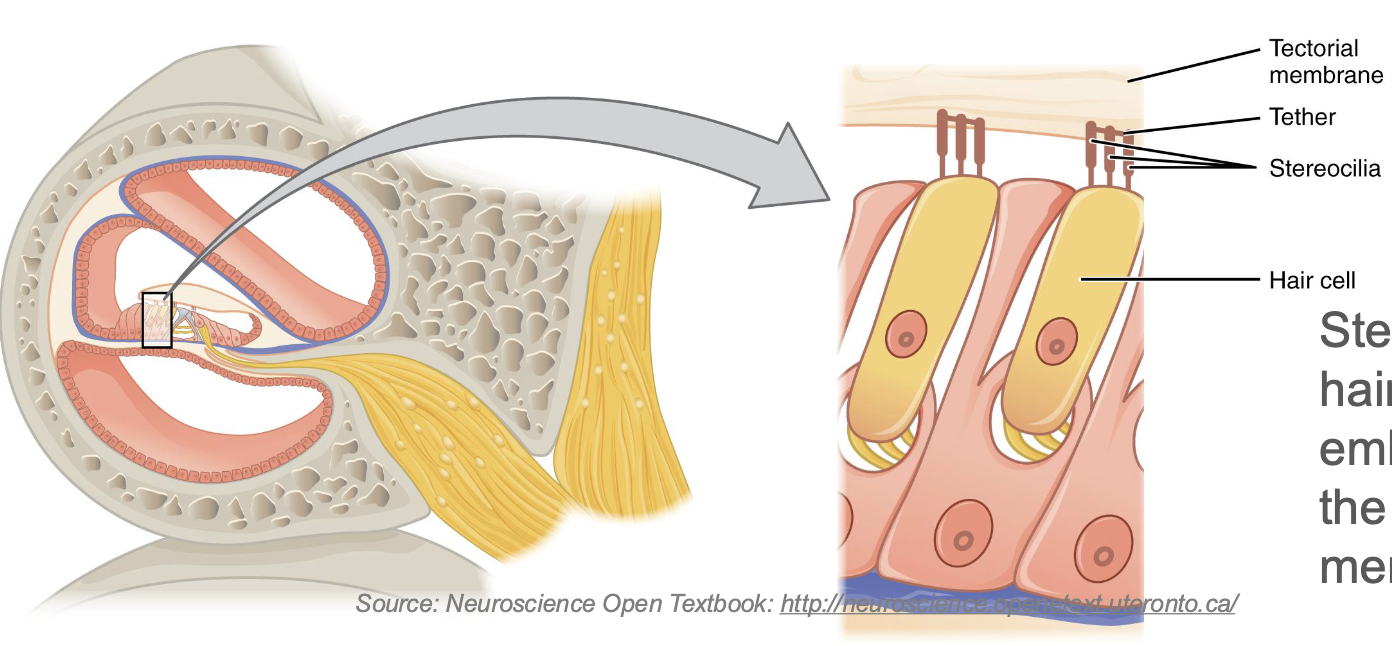
how is frequency encoded in the cochlea?
by the position on the basilar membrane:
apex → wider, more flexible = lower frequency
base → narrower, more rigid = higher frequency
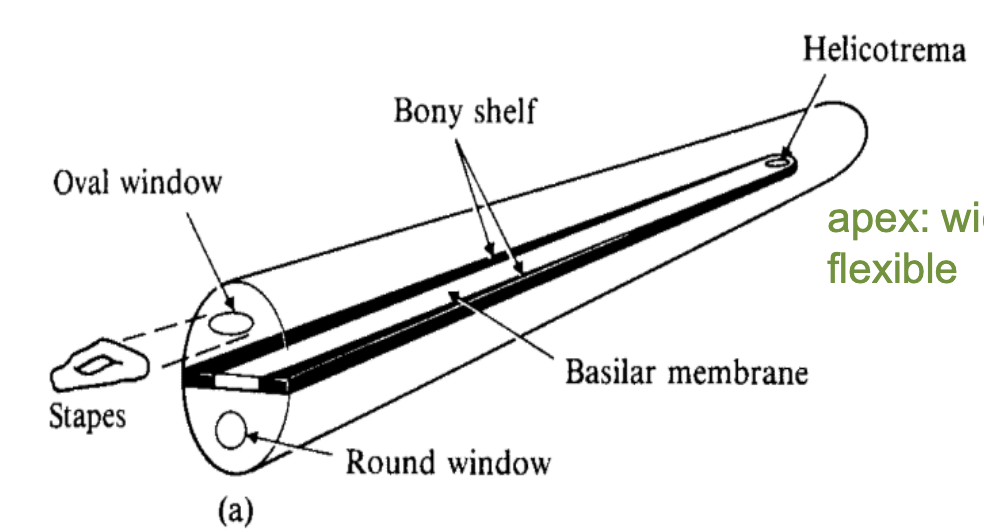
frequency coding at lower frequency in hair cells
can track the frequency of the sound wave:
depolarization-hyperpolarization of the hair cells generates a sinusoidal receptor potential in response to a sinusoidal stimulus
frequency tracking at high frequencies
continuous depolarization (cannot tell when channels are open or closed), so frequency is only encoding based on the position
how is amplitude (loudness) encoded?
Firing rate:
louder sounds = greater displacement of the basilar membrane = greater depolarization of the hair cells = more transmitter release = more action potentials in auditory neuron
Number of neurons activated:
louder sounds = greater displacement of basilar membrane = wider area of activated hair cells = more auditory neurons activated
tuning curves
neurons are most sensitive to a certain frequency, but can be activated if nearby frequencies are louder
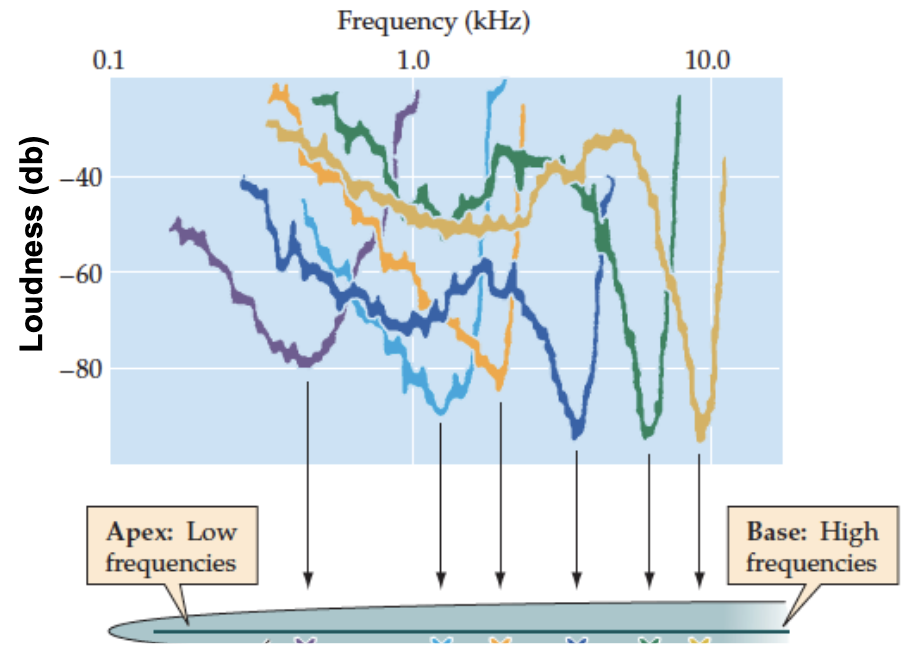
tonotopic organization
where signal is received in cochlea is preserved across all levels of the ascending auditory system